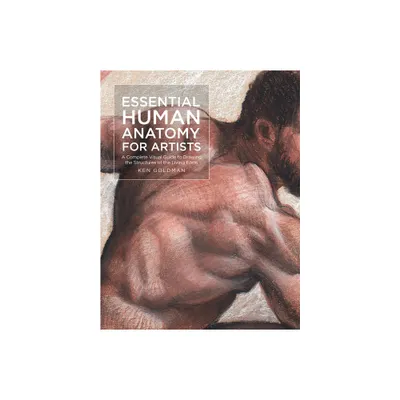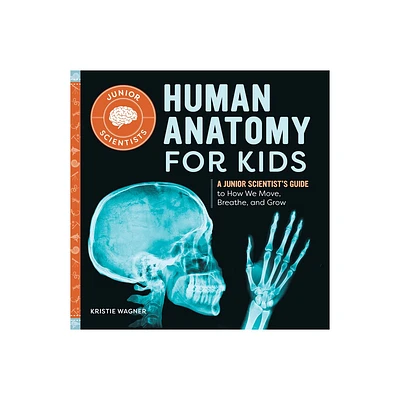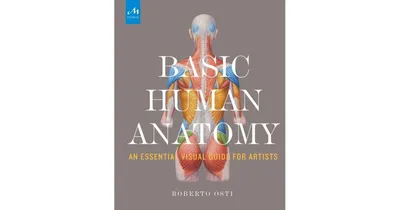Home
Human Anatomy for Artists: The Elements of Form
Loading Inventory...
Barnes and Noble
Human Anatomy for Artists: The Elements of Form
Current price: $84.00


Barnes and Noble
Human Anatomy for Artists: The Elements of Form
Current price: $84.00
Loading Inventory...
Size: OS
*Product Information may vary - to confirm product availability, pricing, and additional information please contact Barnes and Noble
The power of the image of the nudethe expressivity of the fleshhas inspired artists from the beginning. An understanding of human form is essential for artists to be able to express themselves with the figure. Anatomy makes the figure.
Human Anatomy for Artists: The Elements of Form
is the definitive analytical work on the anatomy of the human figure.
No longer will working artists have to search high and low to find the information they need. In this, the most up-to-date and fully illustrated guide available, Eliot Goldfingersculptor, illustrator, scientific model-maker, and lecturer on anatomypresents a single, all-inclusive reference to human form, capturing everything artists need in one convenient volume. Five years in the making, and featuring hundreds of photos and illustrations, this guide offers more views of each bone and muscle than any other book ever published: every structure that creates or influences surface form is individually illustrated in clear, carefully lit photographs and meticulous drawings. Informed by the detailed study of both live models and cadavers, it includes numerous unique presentations of surface structuressuch as fat pads, veins, and genitaliaand of some muscles never before photographed. In addition, numerous cross sections, made with reference to CT scans, magnetic resonance imaging, and cut cadavers, trace the forms of all body regions and individual muscles. Information on each structure is placed on facing pages for ease of reference, and the attractive two-color format uses red ink to direct readers rapidly to important points and areas. Finally, an invaluable chapter on the artistic development of basic forms shows in a series of sculptures the evolution of the figure, head, and hands from basic axes and volumes to more complex organic shapes. This feature helps place the details of anatomy within the overall context of the figure.
Certain to become the standard reference in the field,
Human Anatomy for Artists
will be indispensable to artists and art students, as well as art historians. It will also be a useful aid for physical and dance therapists, athletes and their trainers, bodybuilders, and anyone concerned with the external form of the human body. With the renewed interest in figurative art today, this will be an especially welcome volume.
Human Anatomy for Artists: The Elements of Form
is the definitive analytical work on the anatomy of the human figure.
No longer will working artists have to search high and low to find the information they need. In this, the most up-to-date and fully illustrated guide available, Eliot Goldfingersculptor, illustrator, scientific model-maker, and lecturer on anatomypresents a single, all-inclusive reference to human form, capturing everything artists need in one convenient volume. Five years in the making, and featuring hundreds of photos and illustrations, this guide offers more views of each bone and muscle than any other book ever published: every structure that creates or influences surface form is individually illustrated in clear, carefully lit photographs and meticulous drawings. Informed by the detailed study of both live models and cadavers, it includes numerous unique presentations of surface structuressuch as fat pads, veins, and genitaliaand of some muscles never before photographed. In addition, numerous cross sections, made with reference to CT scans, magnetic resonance imaging, and cut cadavers, trace the forms of all body regions and individual muscles. Information on each structure is placed on facing pages for ease of reference, and the attractive two-color format uses red ink to direct readers rapidly to important points and areas. Finally, an invaluable chapter on the artistic development of basic forms shows in a series of sculptures the evolution of the figure, head, and hands from basic axes and volumes to more complex organic shapes. This feature helps place the details of anatomy within the overall context of the figure.
Certain to become the standard reference in the field,
Human Anatomy for Artists
will be indispensable to artists and art students, as well as art historians. It will also be a useful aid for physical and dance therapists, athletes and their trainers, bodybuilders, and anyone concerned with the external form of the human body. With the renewed interest in figurative art today, this will be an especially welcome volume.


















